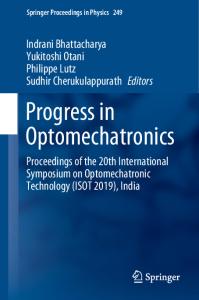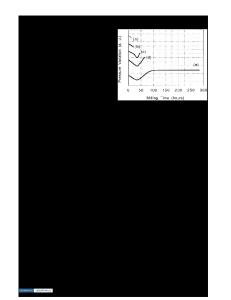Synthesis of polyaniline (printable nanoink) gas sensor for the detection of ammonia gas
- PDF / 1,822,484 Bytes
- 10 Pages / 595.276 x 790.866 pts Page_size
- 65 Downloads / 377 Views
Synthesis of polyaniline (printable nanoink) gas sensor for the detection of ammonia gas Pukhrambam Dipak1,*, Dinesh Chandra Tiwari1,2,* , Anuradha Samadhiya2, Neeraj Kumar3, Thingom Biswajit4, Pukhrambam Akash Singh5, and Rajendra Kumar Tiwari1
1
School of Studies in Physics, Jiwaji University, Gwalior, India School of Studies in Electronics, Jiwaji University, Gwalior, India 3 School of Studies in Chemistry, Jiwaji University, Gwalior, India 4 Department of Electronics, Dhanamanjuri University, Imphal, India 5 Department of Electrical Engineering, NIT-Manipur, Imphal, India 2
Received: 4 June 2020
ABSTRACT
Accepted: 26 October 2020
Here we are reporting the printable nanoink of polyaniline (PANI) which can be printed over the flexible substrate. The printed patterns (flexible) are used for the detection of toxic ammonia gas. The conducting polymer polyaniline (PANI) is synthesized by the chemical oxidative polymerization of aniline. The synthesized PANI is characterized by FTIR, UV–visible, XRD, FESEM and TEM. The FESEM and TEM micrograph shows the formation nanotubes of the PANI having the average diameter of 10.85 nm and average length of 45.6 nm. The XRD analysis revealed the PANI is between amorphous nature and crystalline. The synthesized PANI has the optical energy band gap of 2.9 eV. The printed pattern of PANI has able to detect the lowest concentration of 2.5 ppm of ammonia gas. It has the sensing response of 75%, with response time of 110 s and recovery time of 55 s at 2.5 ppm concentration. The sensor has the sensitivity of 1.0036 ppm-1.
Ó
Springer Science+Business
Media, LLC, part of Springer Nature 2020
1 Introduction Monitoring of harmful gases present in the environment became very important to the present world, which it directly or indirectly affects the living organism. To monitor the level of toxic gases present in the environment many scientists and researchers have developed different types of gas sensors working at different mechanism. Some of the toxic gases
are odorless which cannot be detected by human nose. Thus we have to develop the electronic nose which it can detect and convert to the electrical signal. The ideal gas sensors should have the following characteristic such as operated at room temperature, low detection limit, working at ambient environment, high sensitivity, fast response and recovery, low cost and eco-friendly [1]. Recently (May, 2020, India) a styrene and hydrogen sulphide gas are leaked at
Address correspondence to E-mail: [email protected]; [email protected]
https://doi.org/10.1007/s10854-020-04760-2
J Mater Sci: Mater Electron
Visakhapatnam (LG-Polymer) and Chhattisgarh (Paper Mill) in India which claim live of 11 innocent persons each and 10000 s of people are exposed in both the sites. Thus to prevent such fatal accident detection of the toxic gas is very necessary and to send the warning signals. Among the various harmful gases ammonia is one of most harmful environmental pollutant. Exposing above the 300 ppm of ammonia gas may causes
Data Loading...











